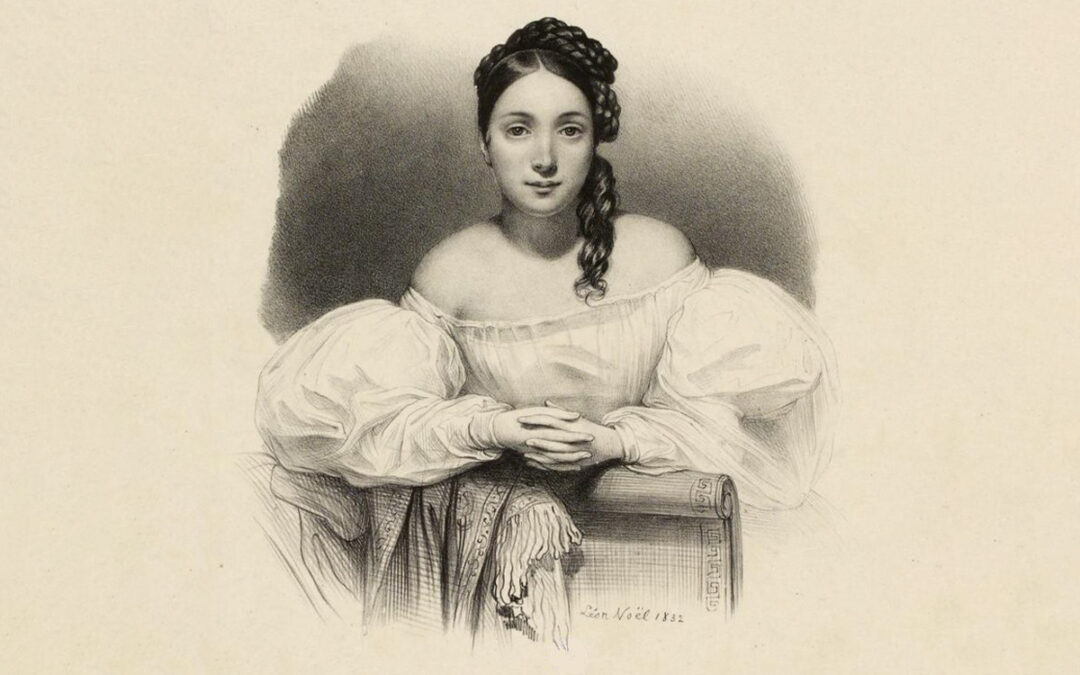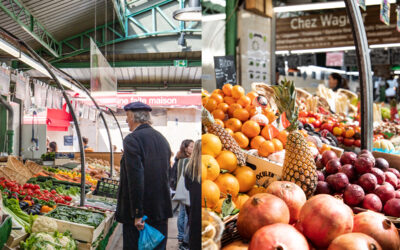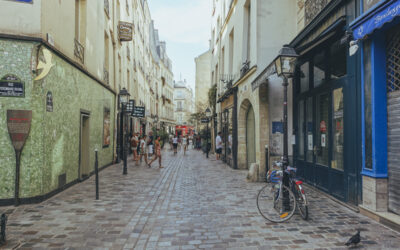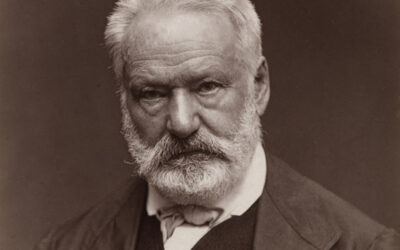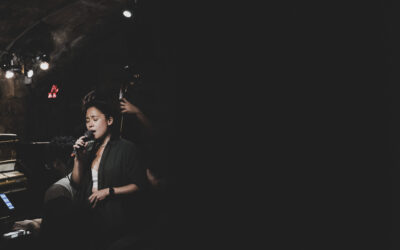Juliette Drouet lithographed by Alphonse-Léon Noël, 1832
At 14 rue Sainte-Anastase, from 1836 to 45 and at 12 from 1845 to 48, a few hundred meters from Place des Vosges, lived the muse and lover of Victor Hugo, Juliette Drouet née Julienne Gauvain.
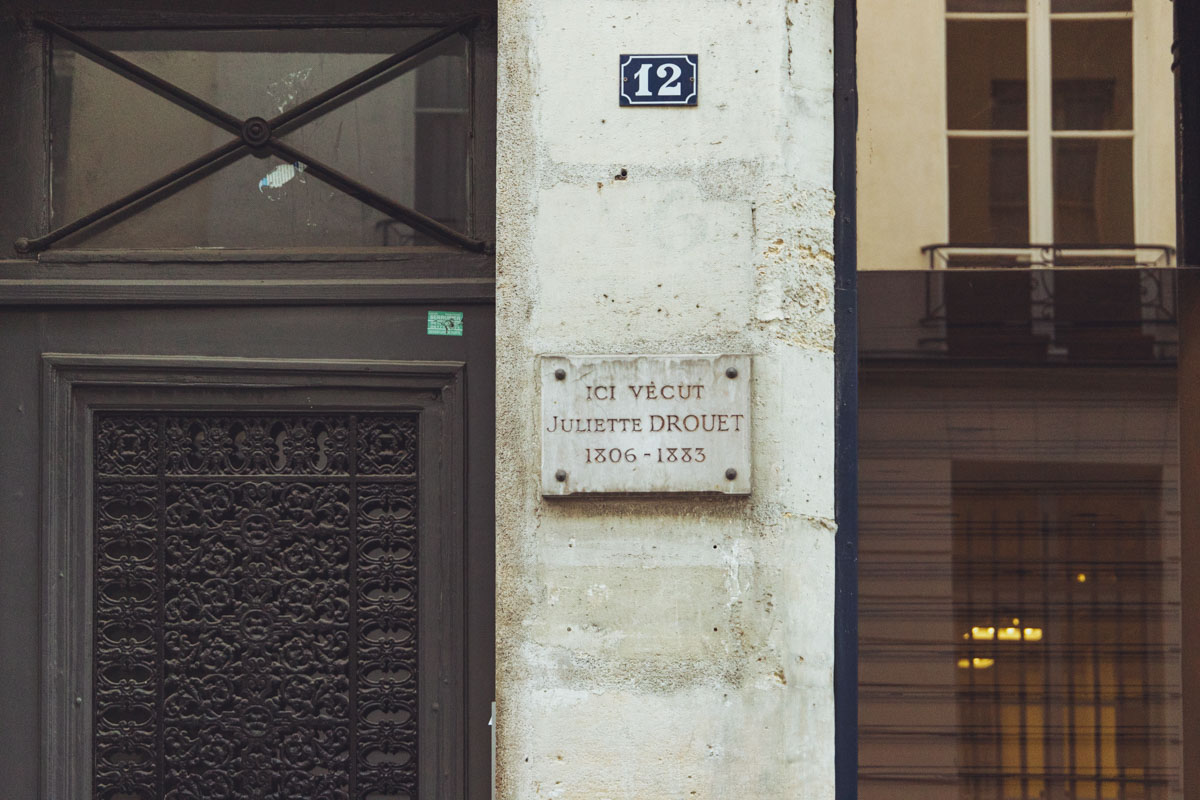
Plaque indicating Juliette Drouet's place of residence between 1806 and 1883, rue Sainte-Anastase
It was in 1833, during rehearsals for Lucrezia Borgia, that Hugo met the actress. At that time, she lived on rue des Tournelles. Then rue de l’Echiquier and rue de Paradis-au-Marais.
She leads a good lifestyle and is a popular actress. Love at first sight between this beautiful brunette with huge eyes and the star writer is immediate. A social evening immortalized in one of the poems of Les Voix nationaux: “you hadn't seen her yet/ it was one evening, at the time when the stars are visible in the sky/ that she suddenly appeared to your eyes, fresh and beautiful … ".
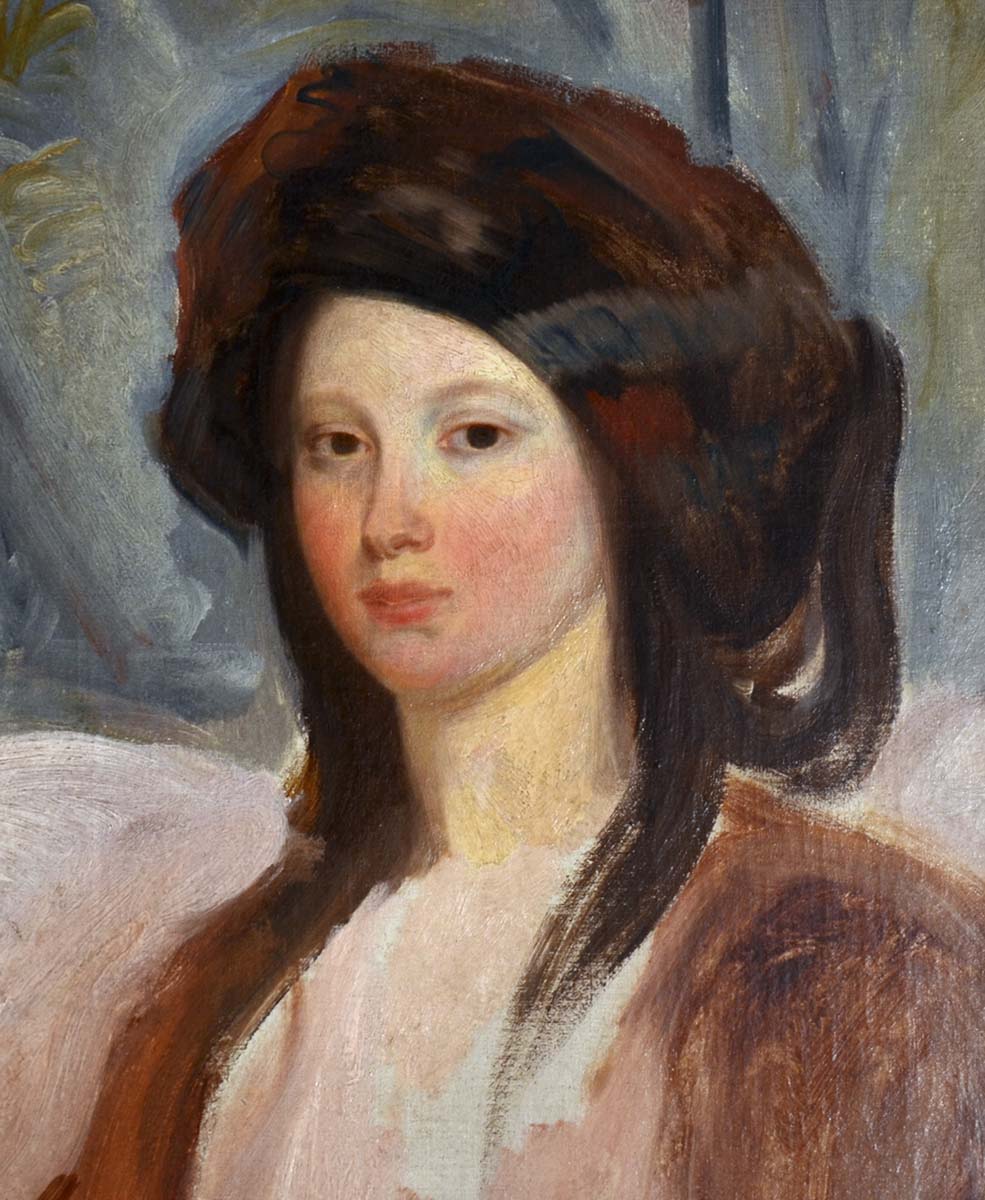
Juliette Drouet as Princess Negroni. Portrait painted by Charles-Émile Callande de Champmartin.
What followed was a romantic passion and the husband-lover-mistress triptych, during which Juliette lived in the direct neighborhood until her death in 1883. Throughout their relationship, she hoped that Victor Hugo would entrust her with the first roles. On the contrary, it leads him to renounce the theater to become the shadow of his shadow, a madness punctuated by fiery poems and feverish correspondence.
He said to her: “I suckled my mother who was my nurse; I drank your soul on your lips and you were also my nurse, because you filled me with ideals.” She leaves everything for him, her lovers and protectors, a Russian prince, moves to a modest apartment on rue Sainte-Anastase where she submits to all his demands and accepts more or less easily his parallel affairs. Every evening, after the show, he comes to join her.
She rereads her manuscripts, and through her condition as an orphan, inspires the character of Causette in Les Miserables. Isn't she basically the woman of his life? Juju and Toto, an extraordinary story. “You are my god and my lover”, “(…) a warrior at heart like I am”, she wrote to him, subject to the injunction to send him two love notes per day. He promises to take her on a trip, she waits.
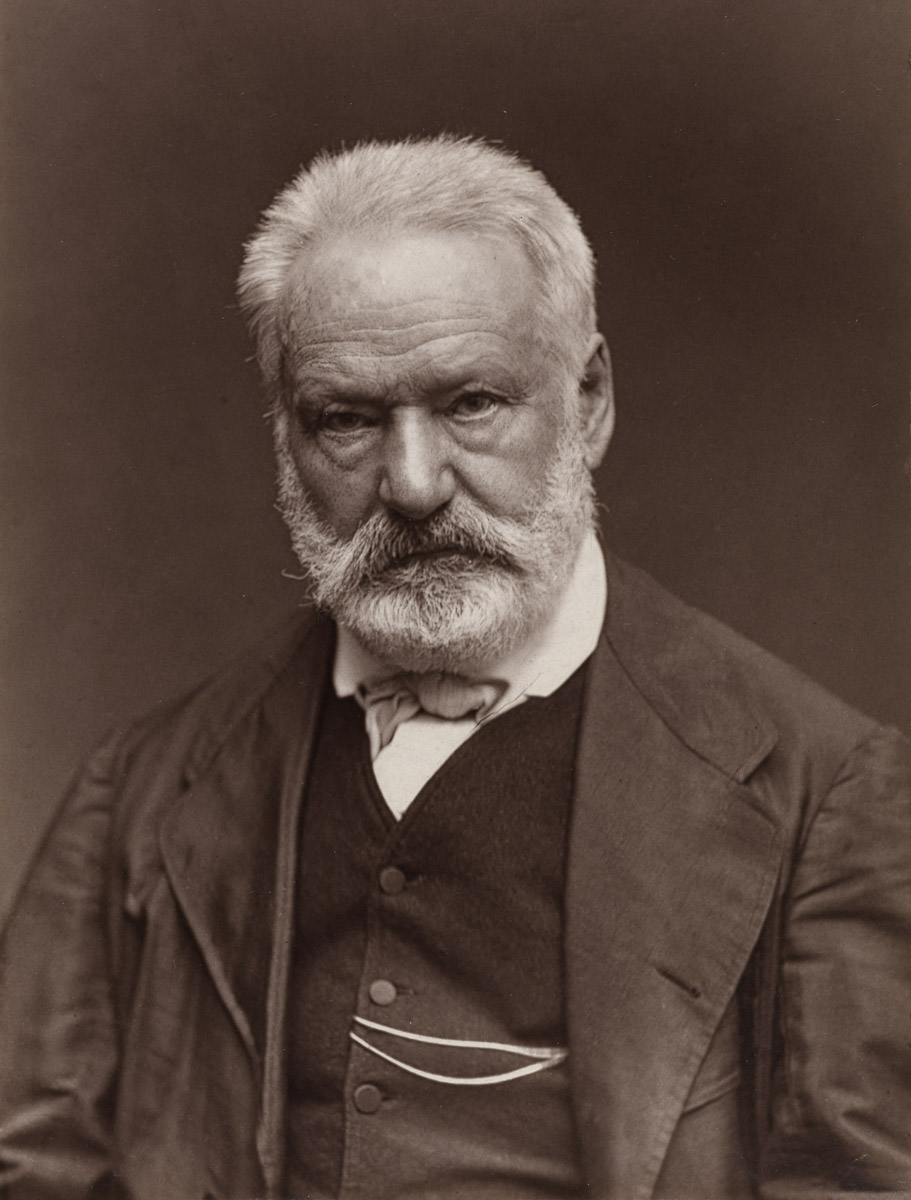
Portrait of Victor Hugo by Étienne Carjat, Maison de Victor Hugo, 1873
He assures her that she will play the role of a queen, she waits. His way of loving it will be to create in his honor the Chinese living room and the medieval-inspired dining room of the house on Place des Vosges, formerly Place Royale. Decor designed for Juliette's house in Guernsey.
On December 2, 1851, during the coup d'état, Juliette hid Victor Hugo from Bonaparte's police and allowed him to escape under a false identity.
She managed to get the trunk containing his manuscripts out of France and joined him in his exile first in Belgium, then in the Channel Islands.
If she was not the only woman in his life, she was his lover, his muse, his soul mate for fifty years.
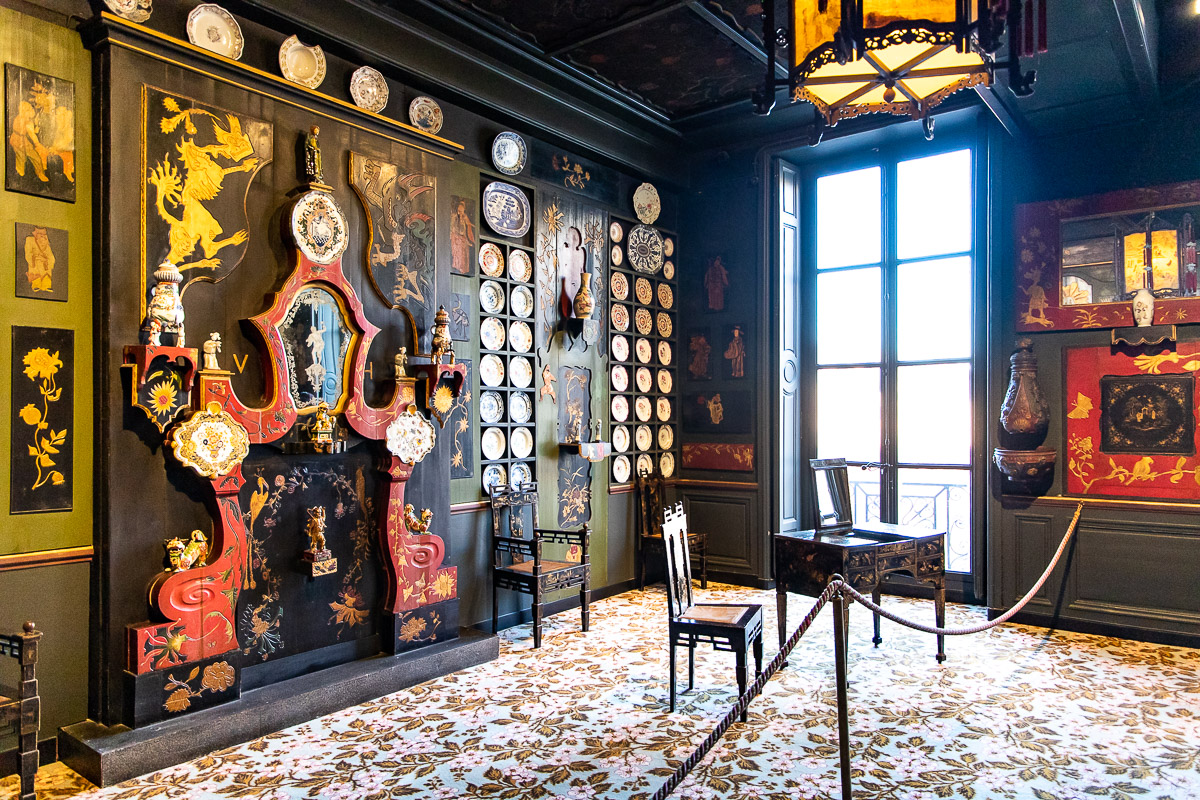
The Chinese living room of Maison Victor Hugo
Text: Valérie Rodrigue
12.04.24
FOR PASSIONATES OFUS
The Enfants Rouges market, everyone loves it
Restaurants. Merchants (fruit and vegetables, cheese, fish, flowers, etc.). And a photo store. All backed by Comme un roman, one of the most beautiful Parisian bookstores, on rue de Bretagne. In short, food for the body and...
The Marais Jewish quarter in Paris
From the 13th century, the Marais was home to a Jewish community which remained there until its expulsion in the 14th century. Fleeing poverty and persecution, Jews from Eastern countries and those from Alsace settled there in the 19th century. Around rue des rosiers and Place Saint-Paul renamed Pletz…
Victor Hugo, the writer with a thousand talents
Born in 1802, Victor Hugo became a social writer, a playwright, a poet, a novelist and a romantic designer. Nicknamed the man-ocean then the man-century, he is a political figure and a committed intellectual. He found success with Notre-Dame-de-Paris in 1831 and with Les Misérables in 1862.
NOW ON THE MOOD MARSH
Jazz at 38Riv: The highlights of May
The only jazz club in the Marais, 38Riv is the temple of cool and swing. Rue de Rivoli, between Saint-Paul and Hôtel de Ville, its vaulted cellars are the home base of the new jazz scene. Every evening, the magic happens.
The Enfants Rouges market, everyone loves it
Restaurants. Merchants (fruit and vegetables, cheese, fish, flowers, etc.). And a photo store. All backed by Comme un roman, one of the most beautiful Parisian bookstores, on rue de Bretagne. In short, food for the body and...
The Marais Jewish quarter in Paris
From the 13th century, the Marais was home to a Jewish community which remained there until its expulsion in the 14th century. Fleeing poverty and persecution, Jews from Eastern countries and those from Alsace settled there in the 19th century. Around rue des rosiers and Place Saint-Paul renamed Pletz…

